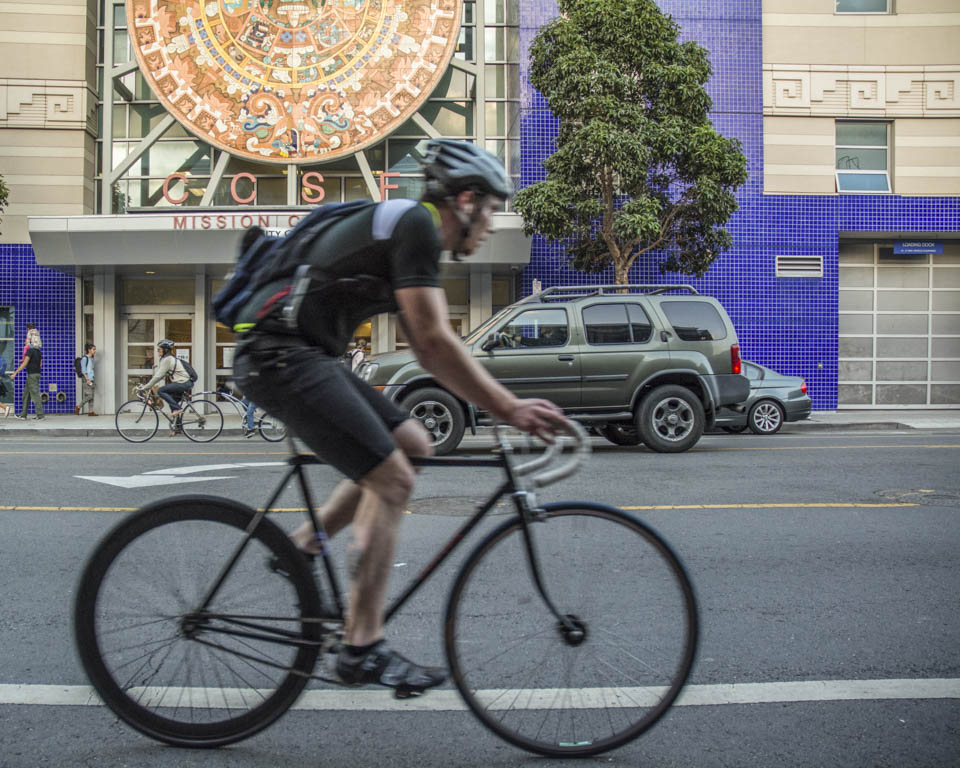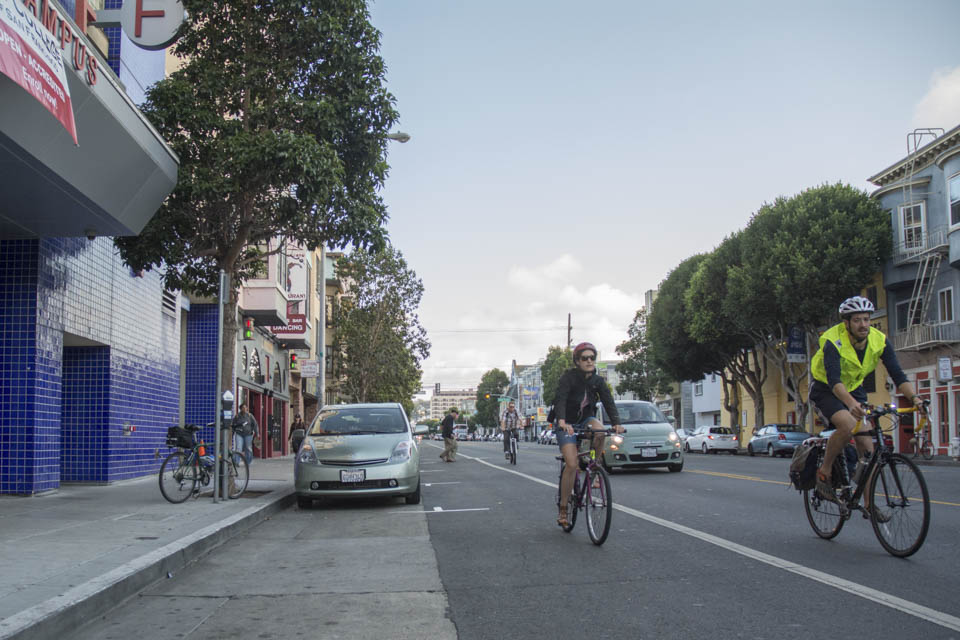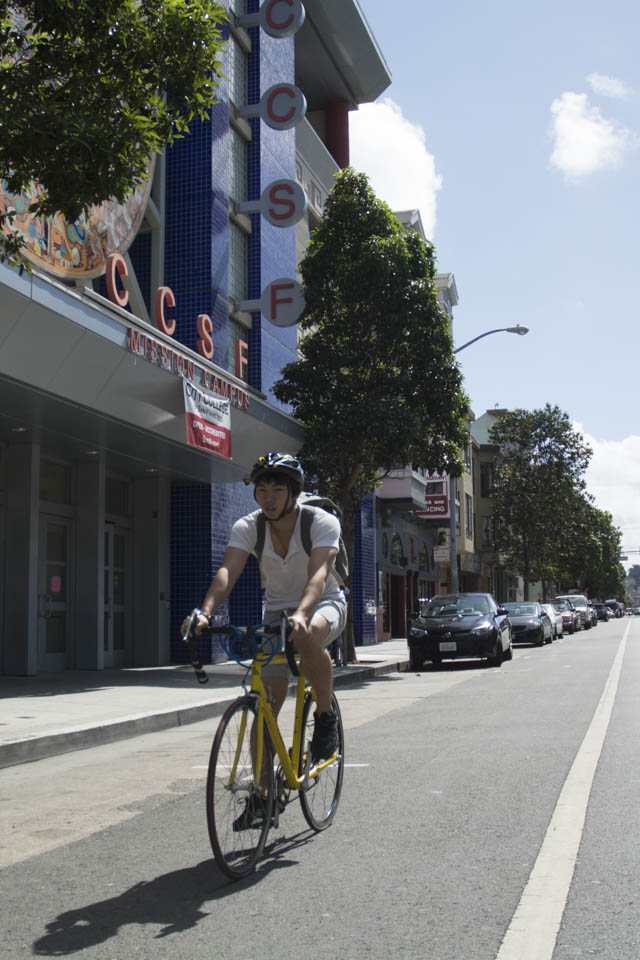Three-foot gap required when passing cyclists
More than 150 bicycle deaths reported statewide in 2012; new state law to help reduce bicycle deaths

By Patrick Fitzgerald
The Guardsman
Just in time for school, California’s “Three Feet for Safety Act” requiring motorists to provide at least three feet of clearance before passing a cyclist on any road became effective Sept. 16.
The California Highway Patrol (CHP) reported 153 bicycle deaths statewide in 2012, a 7 percent increase from 2011. Three feet is about the length of an open car door.
”I think it is detrimental to the safety of pedestrians, bikers and motorists because it is just not safe what is going on these days,” cyclist and student Seth Finki said. “On my way over here today, riding to school, I (was) passed with(in) maybe a foot of space and it’s just not conducive to safe travel.”
Violators will be fined $35 for passing a cyclist proceeding in the same direction within the three-foot zone. The fine plus court cost of $200 makes the total $235 per offense, a significant wake-up call to motorists to pay attention.
If road conditions do not allow a three-feet-safety zone, then a motorist must slow down and can only pass the cyclist if the act “will not endanger” the bicyclist.
The new law raises the burden of proof on motorists in an accident. An accident resulting in an injury increases the base fine from $35 to $220.
“I think it is a great thing,” student Benazir Sardar said . “I know quite a few people who have actually been in pretty horrible collisions and mainly because cars aren’t giving them enough space so I don’t see it as a bad thing.“
San Francisco Metropolitan Transportation Authority’s (SFMTA) 2013 Bicycle Report recorded an average of 2,000 cyclists daily on San Francisco streets, a 96 percent increase between 2006 and 2013.
Technically, a motorist cannot cross a double-yellow line to pass a cyclist. Yet a bicyclist pulling beside a motorist at an intersection would not cause the motorist to violate this law until the cyclist was ahead of the vehicle.
“I don’t think we should really enforce more of a law towards traffic, but enforce more laws toward the bicyclists,” student Douglas Orzynski said. “I have always seen them cross and completely cutting off cars. I even have seen them cutting off buses.”
Police will have the same discretion as before in applying the law, taking into account the circumstances of the situation.
California joins 32 other states, of which only 22 define the distance, as well as the District of Columbia in providing such protection for cyclists. Wisconsin was the first state to enact such a law with a distance of three feet in 1973.
The SFMTA 2013 – 2018 Draft Bicycle Strategy Plan targets increasing cycling from 3.5 percent to up to 10 percent of all trips within the city to meet a 50 percent auto, 50 percent other modes of transportation city-wide commuting share goal by 2018.
Two new, two-staged left turn bike boxes were just installed in mid-September at the intersections of 8th and Folsom, and 11th and Howard Streets to make turning across multiple-traffic lanes safer and less stressful. More planned cycling improvement information is available on SFMTA’s website.
“I believe that, just (like) the law that cars have over driver’s licenses, bicyclists should have a bicycling license,” student Felipe Sanchez said. “They should be trained bicyclists.”
Cyclists can use a full lane on California roads but also must obey the rules of the road including stopping at red lights and stop signs.
In 2013, SFMTA reported that 76 percent of bicyclists were wearing helmets and 95 percent were using the proper lanes for transit by proceeding with the direction of traffic.
Since 2000, cycling has increased by 50 percent according to the California Household Transportation Survey with about 2 million bicycle trips daily in the Golden state.
The California Bike Coalition is working with the CHP to develop signage to heighten awareness of the new law. Visit both the California and the San Francisco Bike Coalition’s websites for more information. The California Department of Motor Vehicles website offers valuable cycling safety tips as well.



Comments are closed.